The Henry B. Plant Museum, located on the University of Tampa campus, pays homage to one of the biggest railroad tycoons in the late 1800s. Not only did Plant link the United States to the western coast of Florida with railroads, but he also built one of the most opulent hotels during the Gilded Age of the 1890s.
History of Florida and Railroads
Although Florida gained statehood in 1845, the population remained relatively sparse due to transportation issues. The journey to central and south Florida consisted of uncomfortable roads, built by laying logs next to each other. Otherwise, wagons and horses sank in the sandy soil conditions. For that reason, Tampa remained a small fishing village of a little over 700 residents.
When Henry Plant, a railroad magnate from Connecticut, brought the Florida West Coast Railway to Tampa in 1884, the sleepy town of under 800 residents became a transportation hub of the Plant System. Visitors disembarking Plant’s train in Tampa could then take a Plant steamship to Mobile, Key West, or Cuba.
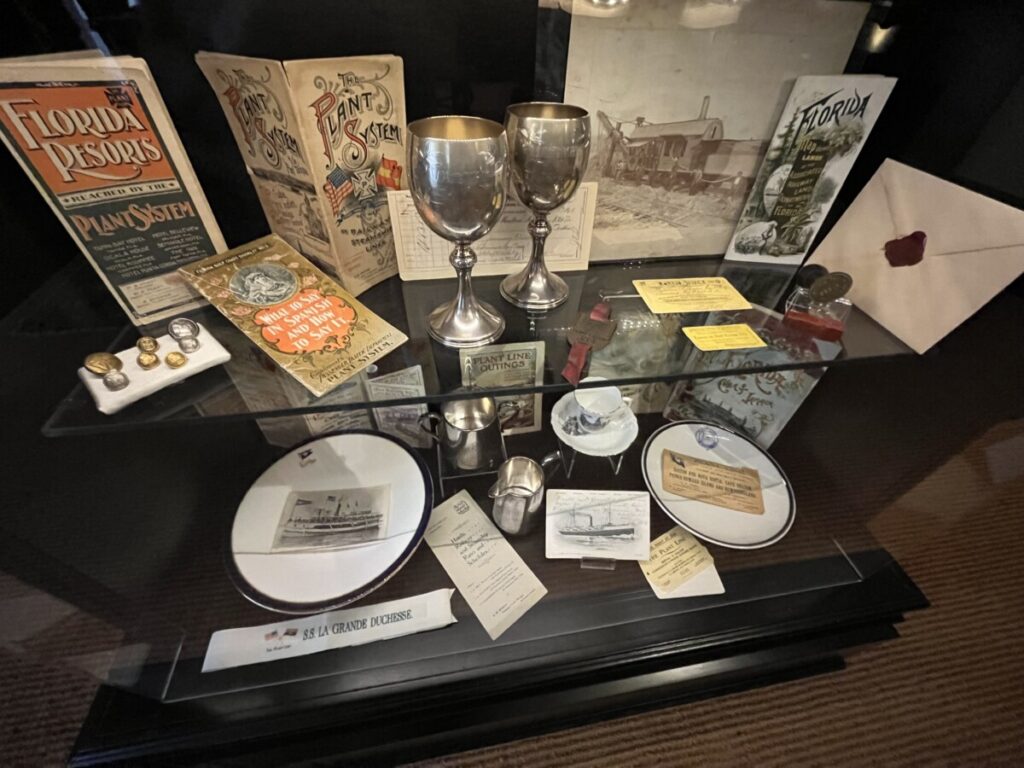
At about the same time, Henry M. Flagler’s East Coast Railway connected the US to the eastern side of Florida – first to St. Augustine in 1878, Daytona Beach in 1889, Miami in 1896, and Key West in 1912. Florida owes most of its growth to Plant and Flager. Along the way, both men built luxurious hotels to encourage tourism.
Tampa Bay Hotel
Competing with Flagler’s three posh hotels in St. Augustine, Plant asked investors to help build a hotel in Tampa. Not getting their support, Plant funded the Tampa Bay Hotel himself at a cost of $2.5 million ($20 million today) for the building and $500,000 for furnishings.
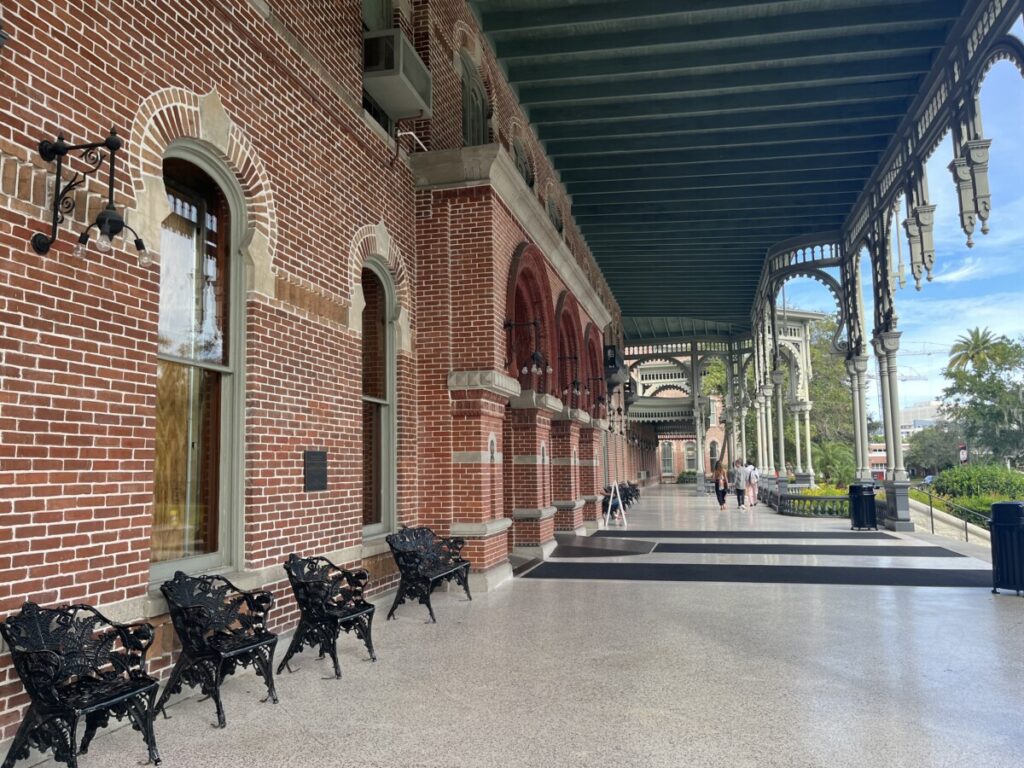
Plant opened the Tampa Bay Hotel in the winter of 1891. The Moorish-themed, five-story hotel featured silver domed minarets above each corner and a large verandah extending along the entire front facade. With 511 rooms, an 18-hole golf course, tennis and croquet courts, a boathouse, a greenhouse, racetrack (for horses), and a bowling alley, guests had everything they wanted for a comfortable stay.
Interior of the Plant Museum
Today, half of the first floor of the hotel is the Plant Museum. The other half is a classroom building for the University of Tampa. Once inside, our guided cell phone tour took us to the Writing & Reading Room, which looked almost exactly as it did in 1898.
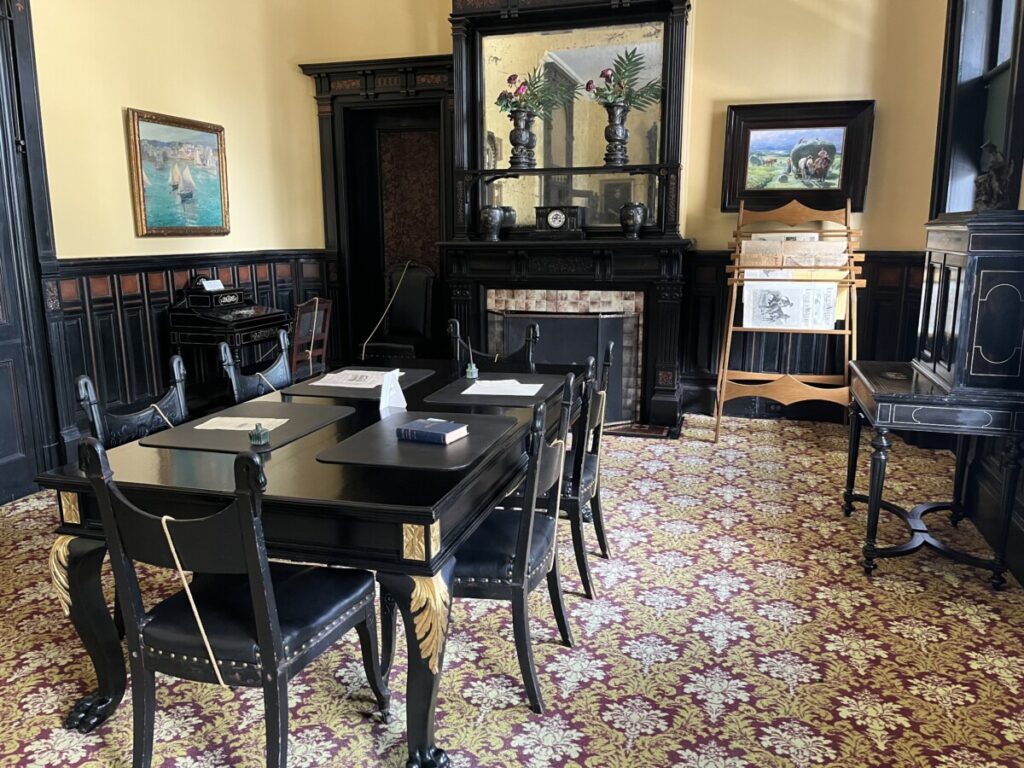
Because the Plant System could transport troops and goods to Cuba, the hotel became the headquarters for the US Army during the Spanish-American War. Visitors during this time included Colonel Lieutenant Teddy Roosevelt, Frederic Remington, and Clara Barton.
The Grand Hallway led us to other rooms in the museum. Opulent furnishings and mirrors lined the walls dotted with keyhole door archways.

Plant operated the Tampa Bay Hotel from December through April each year as Florida’s weather and humidity became unbearable (without air conditioning) in the warmer months. He provided electricity, telephones, and indoor plumbing – amenities rarely found in other hotels.
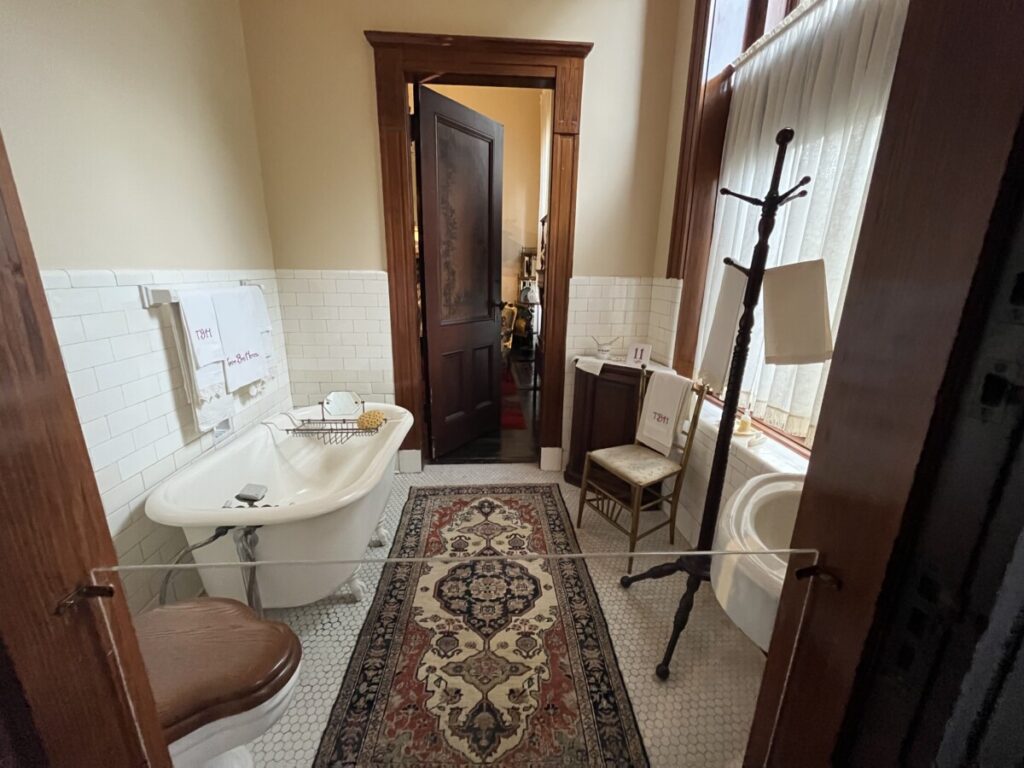
Restored to the 1910 era, the bathroom displays a tub, wash basin, and toilet. When the hotel first opened, the plumbing provided both hot and cold running water, something most residents of Florida did not have.
Three Room Guest Suites
For the wealthiest guests, the hotel offered 16 guest suites. These consisted of three large rooms and a private bathroom.
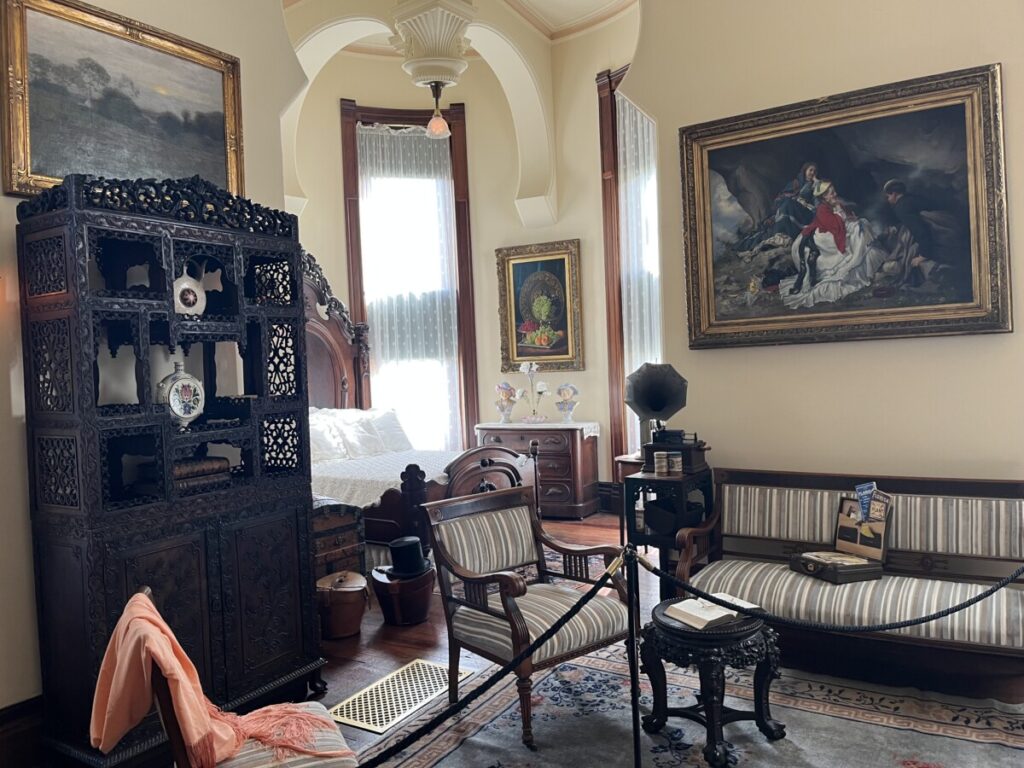
When the hotel opened in 1891, the room rate was $5. The three-bedroom suites ran for $15 per night, which is roughly $480 in today’s currency. The bedroom featured large windows and good cross ventilation for airflow. Visitors traveled with heavy trunks. Plant included two elevators in the hotel – one for passengers and one for freight. Employees stored guests’ trunks on the fourth floor of the hotel.
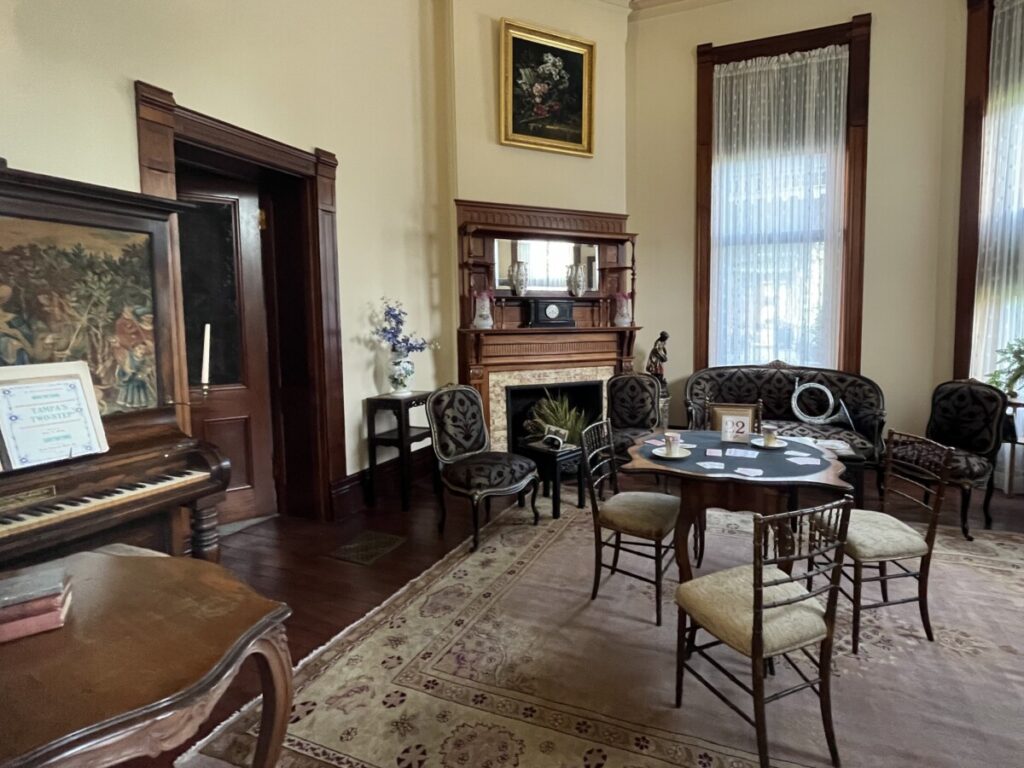
The suites included a music room and guests could request a piano during their stay (shown on the left). Remember, people didn’t have television, radio, or computers to occupy their time so practicing the piano filled the days.
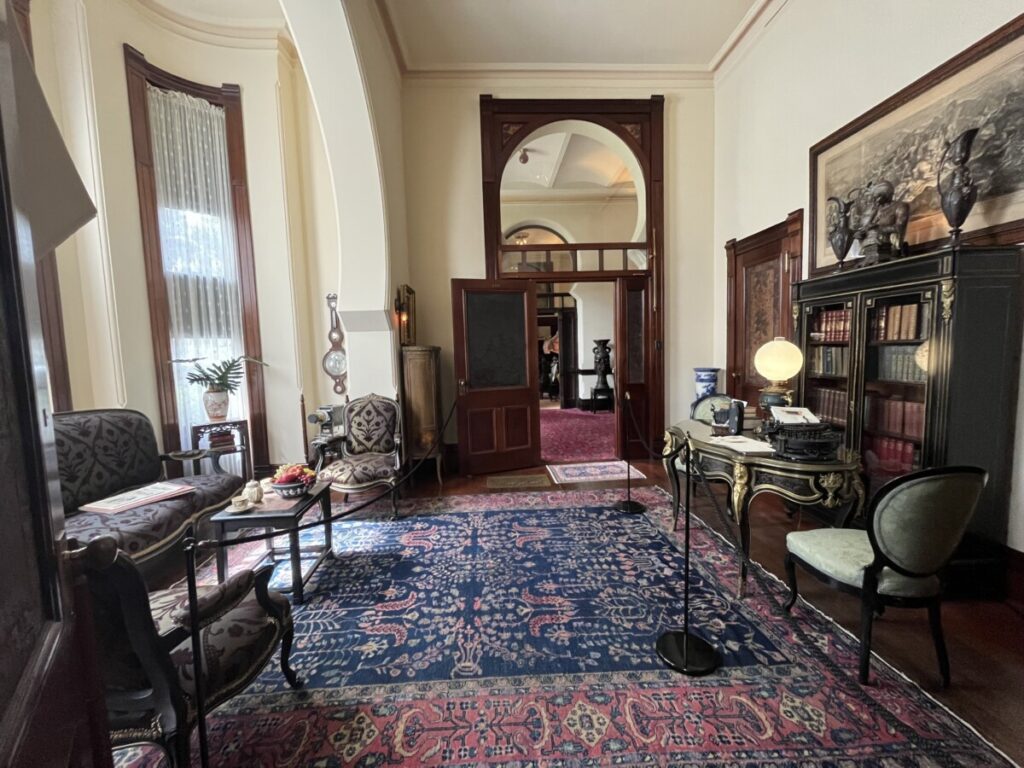
Lastly, the suite included a library, complete with a typewriter and Hotel Tampa Bay stationery. The suite provided a private entrance to the gardens as well.
Other Exhibits
Many rooms included examples of the extravagant furniture Mrs. Plant purchased for the hotel from her extensive travels. Additionally, the museum’s current exhibits included Women & Their Pastimes, Sports and Amusements, and Stop the Presses! Fake News and the War of 1898.
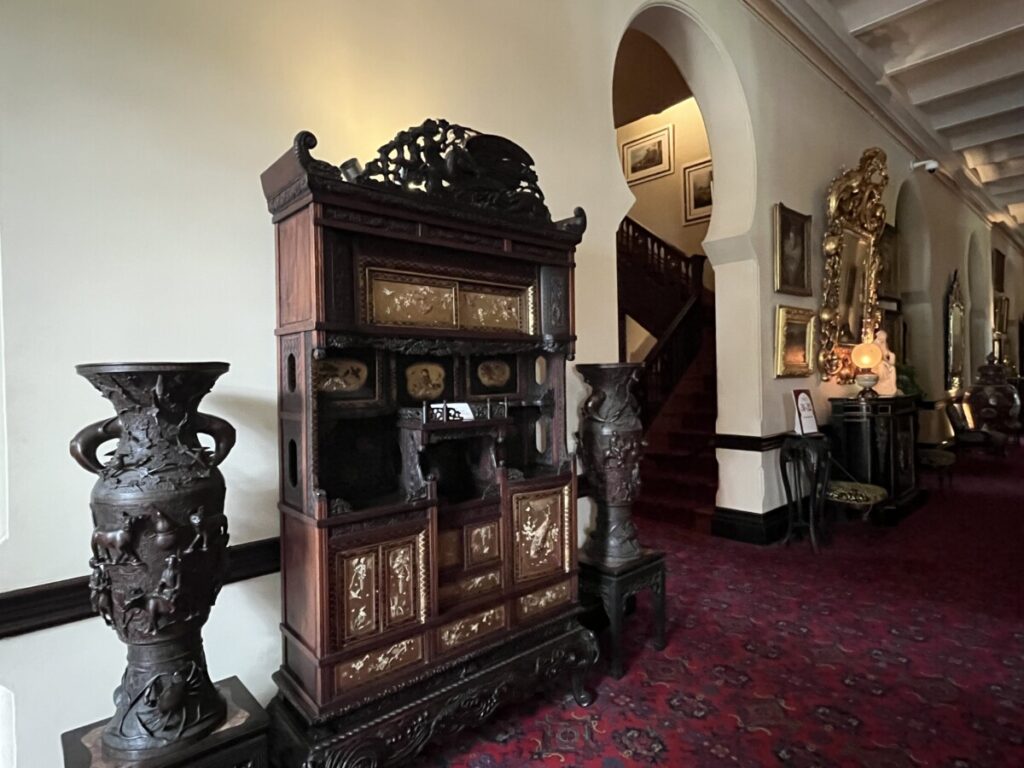
Unforunately, Plant passed away in 1899 and his heirs didn’t have much interest in the hotel. In 1905, the city of Tampa purchased the hotel and grounds for a mere $125,000. The hotel’s popularity continued to decline until closing in 1932.
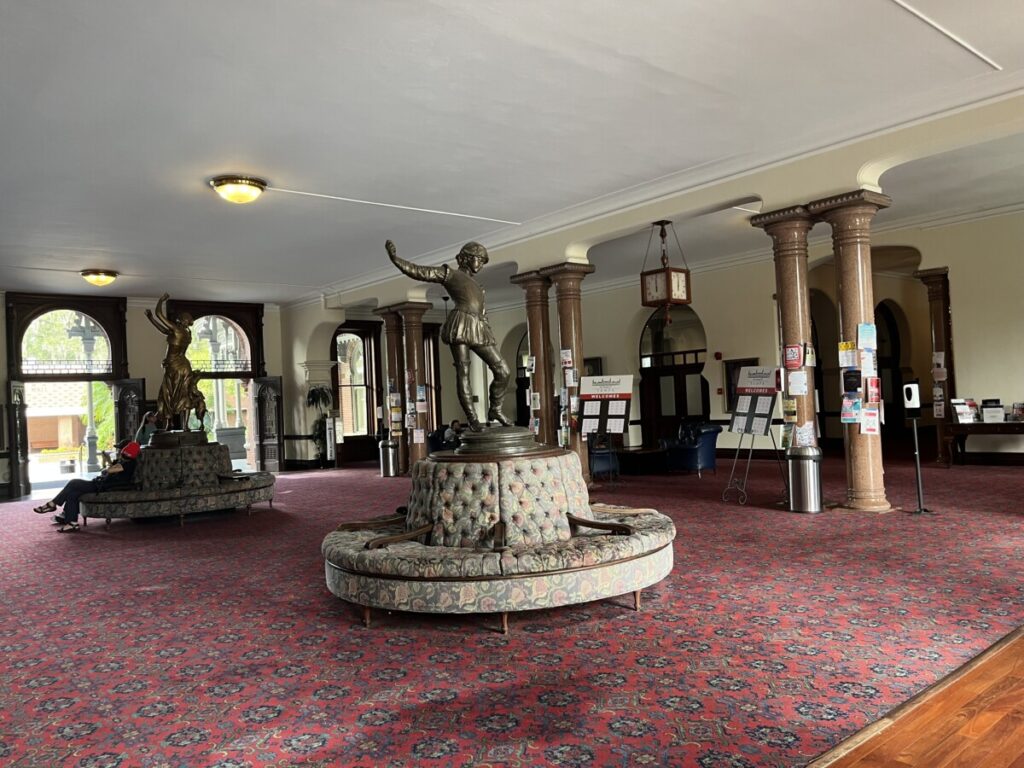
The following year, the University of Tampa moved into the hotel when it became a four-year college. Today, half of the first floor and all the upper floors serve as classrooms and offices for the college.
Conclusion
For more information about the Plant Museum, visit the website here.
To see pictures of the hotel in its heydey, click the Sunland Tribune digital commons link here.
